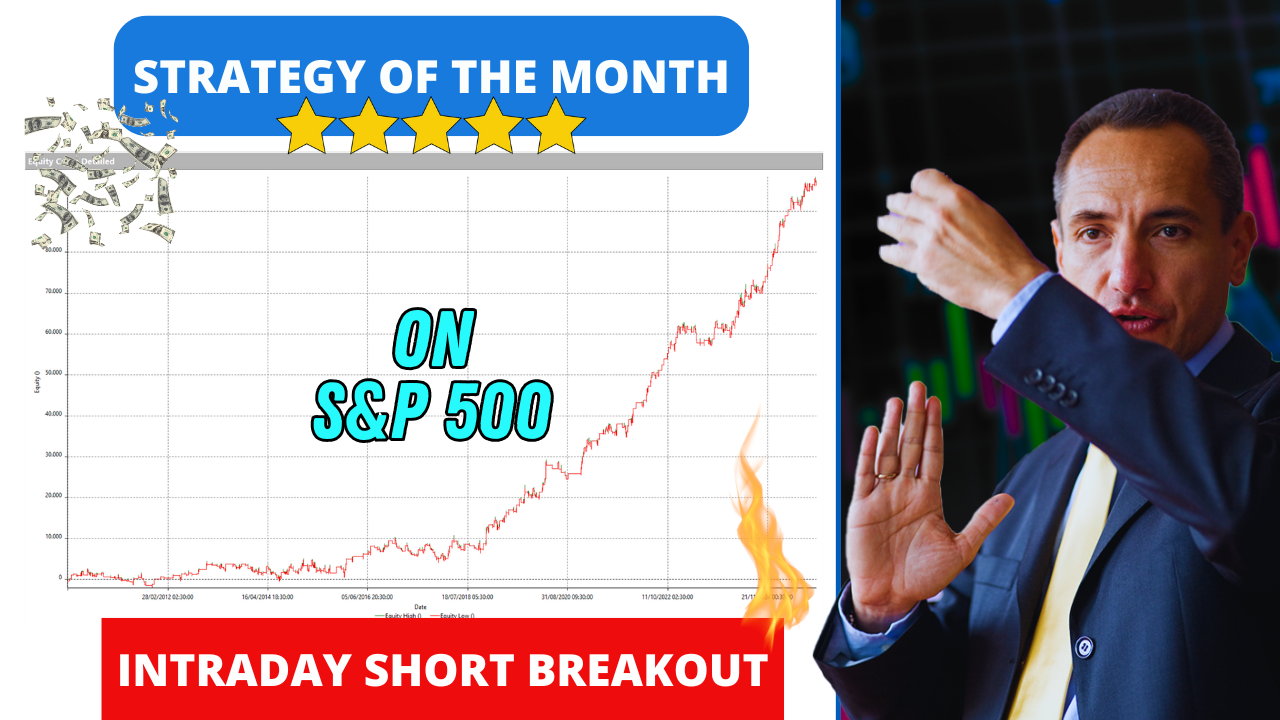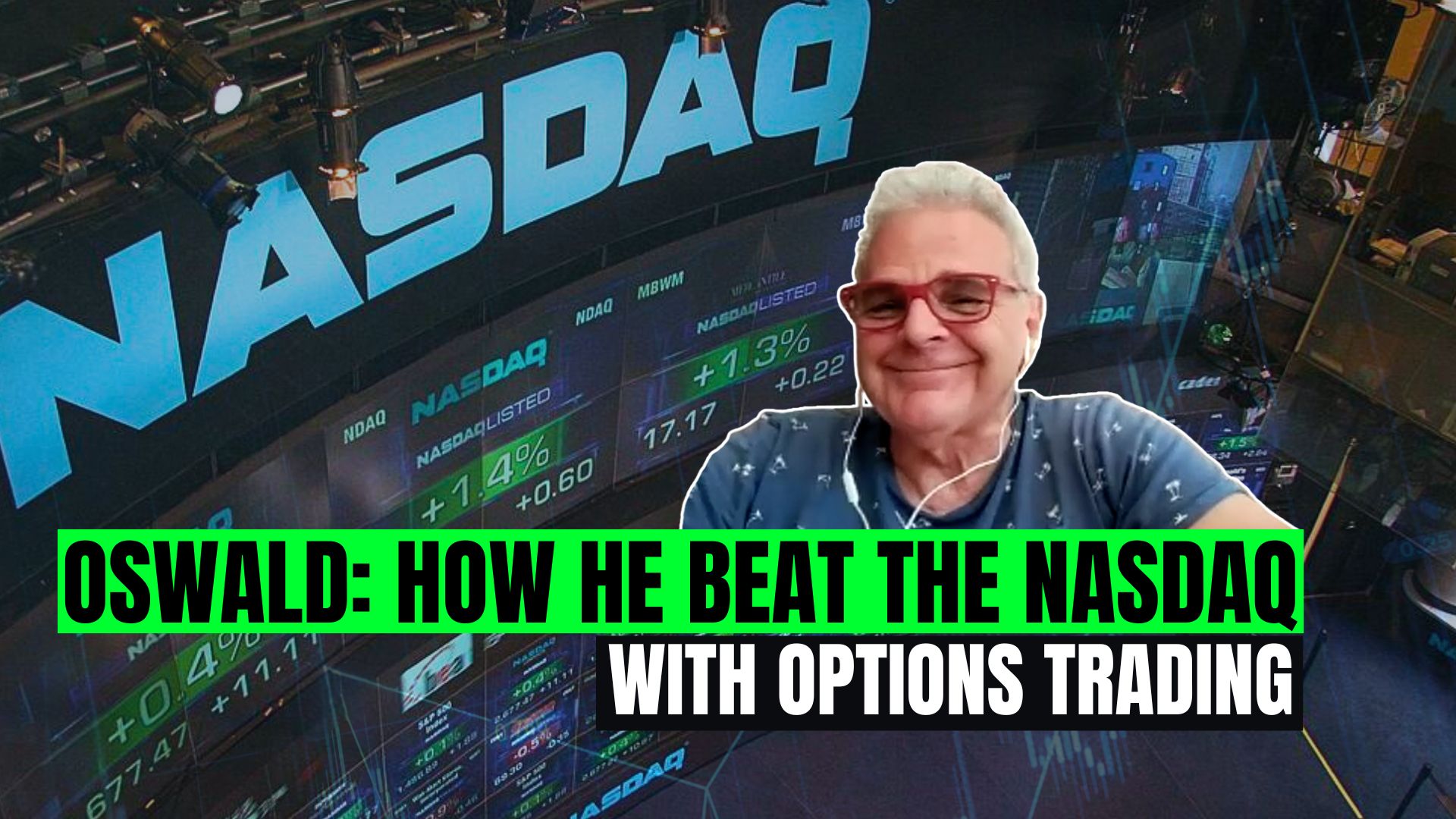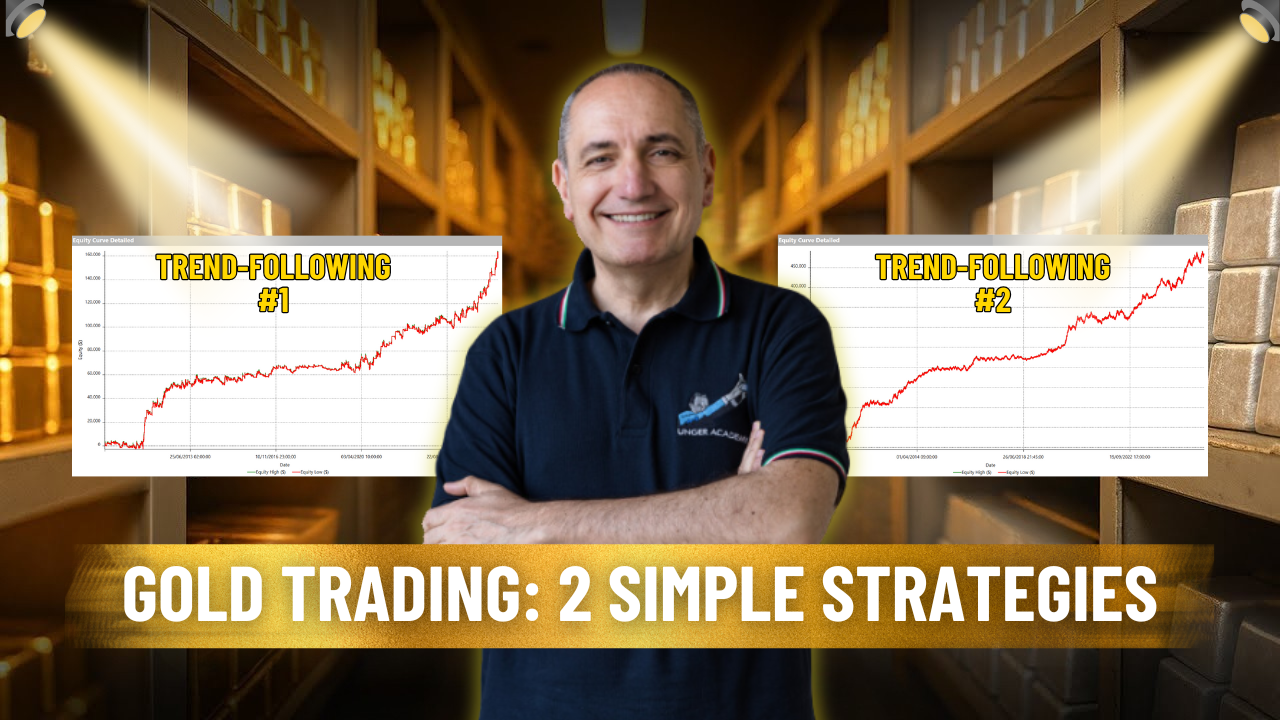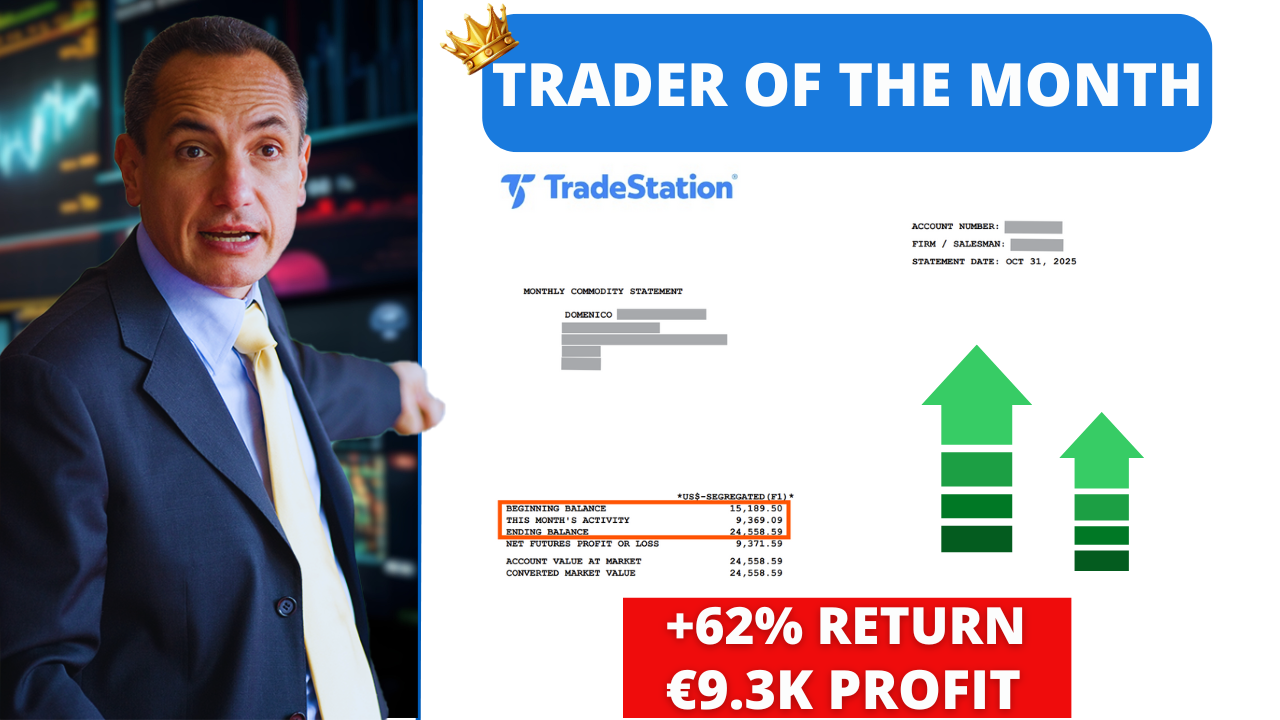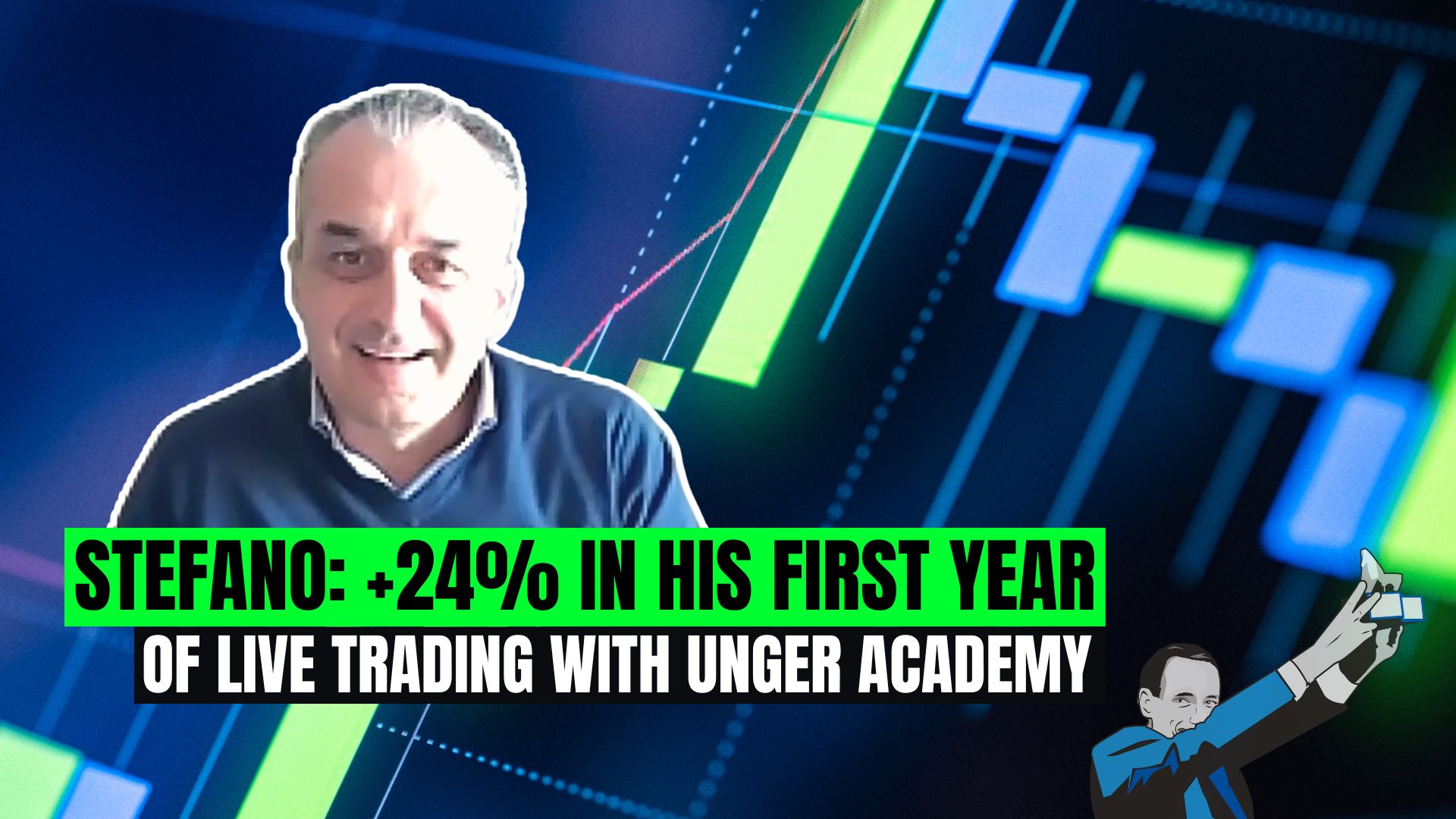Introduction
Hey everyone and welcome back!
One of the coaches at Unger Academy here, and today, as we’re at the end of the year, we’re to be taking stock of the best strategies of 2022 and our portfolio, showing the results and explaining how they work.
Nasdaq
Okay, so let’s start with the Nasdaq, a market that has been performing well this year.
The first strategy opens new trades when false breakouts occur at the highs or lows of the previous day.
Since it’s clearly a reversal strategy, it will enter short upon the occurrence of a false breakout at the previous day’s high instead, it will enter long at the previous day’s low.
Here are the annual results. Here we have basically uploaded data from the end of 2021, but now we’re interested in seeing 2022.
You can see this strategy has produced over $30,000.
These results that we’re going to be seeing together today already consider slippage and commissions. What do I mean by that?
I mean that we’ve taken into account the actual cost of each trade, or what would be the real cost to trade on these markets, and so the results are as close to reality as possible.
The number of trades was this, so 77 trades with an Average trade of almost $400 net, which really says it all.
Before taxes, of course, because you pay taxes on financial returns.
Dax
Let’s look at the second strategy. It’s a trend-following strategy, but this time multiday so it’s different from the previous strategy, which closed its positions at the end of the session.
This is a strategy that tries to catch the trend.
Let’s look at the results of this other strategy, which could almost be described as the opposite of the previous strategy.
The Average trade in this case is lower than the intraday strategy and this is quite a "strange" feature, we could say.
However, the results are very good and 2022 brought in over $16,000.
In this case, the equity line is uglier than the previous one, that we didn’t see.
So let’s go and have a look at it. Here it is. The equity line really performed much better instead.
Let’s move on to the third and final strategy that I want to show you for the Nasdaq market.
This is a strategy designed on a 15-minute timeframe.
It could also be called a trend-following strategy because it starts from the opening of the day and identifies levels above or below the opening of the day to place the orders.
These levels are calculated with the help of the ATR, which is an indicator used to calculate market volatility.
So, if there is a downward extension or an upward extension, as there was in this case here, for example, the strategy will try to enter the market and intercept and follow the trend.
This is also an intraday strategy that will close its positions at the end of the day.
Let’s go and take a look at the results. In this case, we may have perhaps one of the most beautiful equities that we will see today so, it’s a strategy that has performed really well and in general, a lot of trend-following strategies in the Nasdaq market are performing very well.
In 2022, we have had gains of over $24,000 and that’s with an Average trade of $311.
Crude Oil
Alright, moving on to the second market, let’s go and take a look at the Dax. This is also an equity index, but of course, it’s a European market.
And today I’m going to show you two strategies, a mean-reverting strategy and a trend-following strategy.
So let’s start with the mean-reverting. Again, we’ll have a false breakout at the levels of… – at the low of the previous day to go long or at the high of the previous say to go short so pretty much like the first reversal strategy we saw for the Nasdaq.
It’s the same logic but in this case, the exits on the long side are dependent on whether the strategy is profitable or not.
So, if it is in profit, we’ll close our trades at the end of the day, while on the other hand, if we’re in a slight loss…
Not like this case where we would have hit a stop loss…
But like in this case here, for example. Let’s zoom in.
You can see that at the end of the day, the strategy checked on the open profit.
It was less than zero, so the strategy was at a loss at that point and in these cases, the strategy keeps the long trade open and in this case, it actually did well because there was a bullish trend the next day.
Let’s take a look at the results. The DAX is clearly a heavier market with a larger notional contract than the Nasdaq and so in this case we’re definitely going to be seeing bigger numbers, and we’re already seeing it:
in 2022, an intraday strategy managed to make over $42,000.
Again, the results are net of commission fees and slippage.
Now let’s look at the equity line. It’s definitely more irregular.
We see a little bit more up and down at the beginning of the year. However, then, we could say in the last six months of the year,from July until now the strategy has strung together a nice series of trades that have resulted in finishing the year on a high note, so to speak. With the exception of that last drawdown, which you can give it credit for.
But let’s look at the next strategy that uses Bollinger bands and is based on a trend following logic.
If the price crosses the upper band, we’ll buy. On the other hand, if the price crosses the lower band to the downside, we’ll sell.
This is a strategy that has many years of out-of-sample, as well as all that we’ve seen before.
And again, you see, 2022 was a particularly fortunate year for it.
We’re seeing profits of over 82,000 euros in this case, because we are in the European market, with a really fabulous average trade of €1,160.
So, this strategy has performed you know very well.
Now let’s move on to the commodities market.
It has been a particularly lucky year for Crude Oil.
Let’s go and take a look at the strategy, it’s all about entering the trend at the crossing of the moving averages.
We’ll obviously have a slower average and a fast average that will trigger long trades when it crosses up, while it will trigger short trades when it crosses down.
This is a strategy that made a good profit of $27,000 in 2022 with an average of $283.
A pretty high number of trades, you see it, 97 trades.
The equity line of the system was really very good, but then again this is a trend-following strategy and in years like this… You see how much the market has trended in the first part of the year, only to drop a little bit in the second part of the year but we see that there were definitely a lot of months where the market was trending, and certainly a lot of volatility, and this definitely helped this strategy.
Then we’ll see… we’ll also see another strategy developed again on Crude Oil on a 15-minute timeframe.
In this case, it’s an intraday strategy, where the positions are closed at the end of the session.
This is also a simple trend-following strategy, because it enters long when the previous day’s high is crossed and enters short when the previous day’s low is crossed.
This is a strategy that has also confirmed the strong trend in Crude Oil.
And was able to intercept all the different moments of it as well.
We see that in 2022, the intraday strategy earned slightly less than the multiday strategy, $20,000, with an average trade of over 200.
And we can be quite happy with that as well.
Now let’s look at the last strategy for Crude Oil.
Again, this is also a strategy that enters on a breakout, so it’s a trend-following strategy.
In this case, we’ll enter at the highs or lows of the session, which are calculated between midnight and 9:30 pm.
As previously mentioned, this is a trend-following strategy.
And you can see that it really works much more.
That’s because the high and the low of the current session are levels that are more easily reached by the market.
However, this did not affect the Average trade, which remained really very high, at $315.
Also, the annual profit for the year is over $47,000, so indeed a very good result.
This equity line has also been very good, although with, let’s say, some abrupt moments but let’s say the price you pay for volatility in the markets and for maybe being able to earn more on a trade is just that: the fact that it can’t always go well anyway.
RBOB
Let’s finally take a look at the last market, the RBOB, which belongs to the same category, energetics, so like Crude Oil for example.
And we see the RBOB Gasoline, so the product that replicates the performance of gasoline.
And here we see a bias-type strategy that also has a kind of filter to confirm the current trend.
This strategy will enter long on Friday if the high of the last bar, so the last 15 minutes, is crossed.
In this case, we’re using this timeframe.
On the other hand, the short side will be triggered on Monday and will enter when the low of the last three bars has been crossed.
This is a really simple strategy. It makes two trades per week, one long trade and one short trade, one on Friday and one on Monday.
As you can see, the results are excellent.
Except for this somewhat bad period in the summer months.
The summer months are usually the time when the volumes are the lowest and usually you also tend to have more slippage because the volumes are very low and there are no counterparts.
RBOB Gasoline is a very heavy market that has a low ticker because a tick is only worth $4.20 but it has a very high volatility and during the overnight hours it isn’t very liquid.
So just be careful when trading this instrument.
But anyway, we see that even this strategy, that makes almost 100 trades, because we know that we make two trades per week for 50 weeks that there are in a year, here we have more or less 100 trades.
A few trades were missed but I mean here it is, it’s really a confirmation that the breakout is very small.
The average trade reaches almost $600 and the Net profit even exceeds $58,000.
At this point I’d like to take this opportunity to wish you a happy 2023!
As always, before we go, I invite you to take a look at the link in the description of this video. From there, you can watch a free presentation by Andrea Unger, our founder and the only 4-time world trading champion. From there you can also get our best-selling book, The Unger Method, by just covering shipping costs, or even book a free call with a member of our team.
If you enjoyed this video, please leave us a Like, remember to subscribe to our channel and click on the notification bell so you can stay updated.
With that, happy new year to all of you and we look forward to seeing you soon! Bye bye for now!

